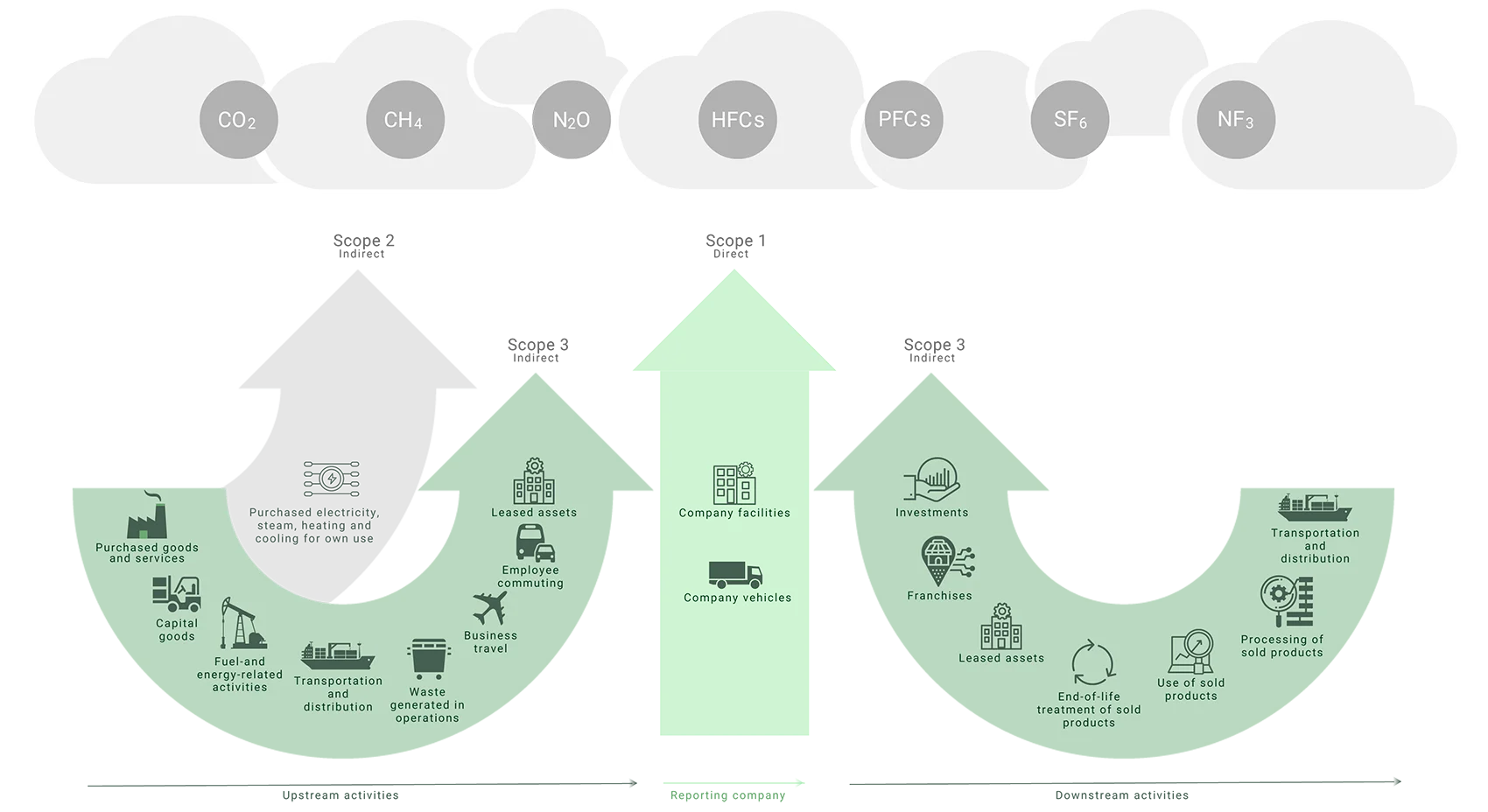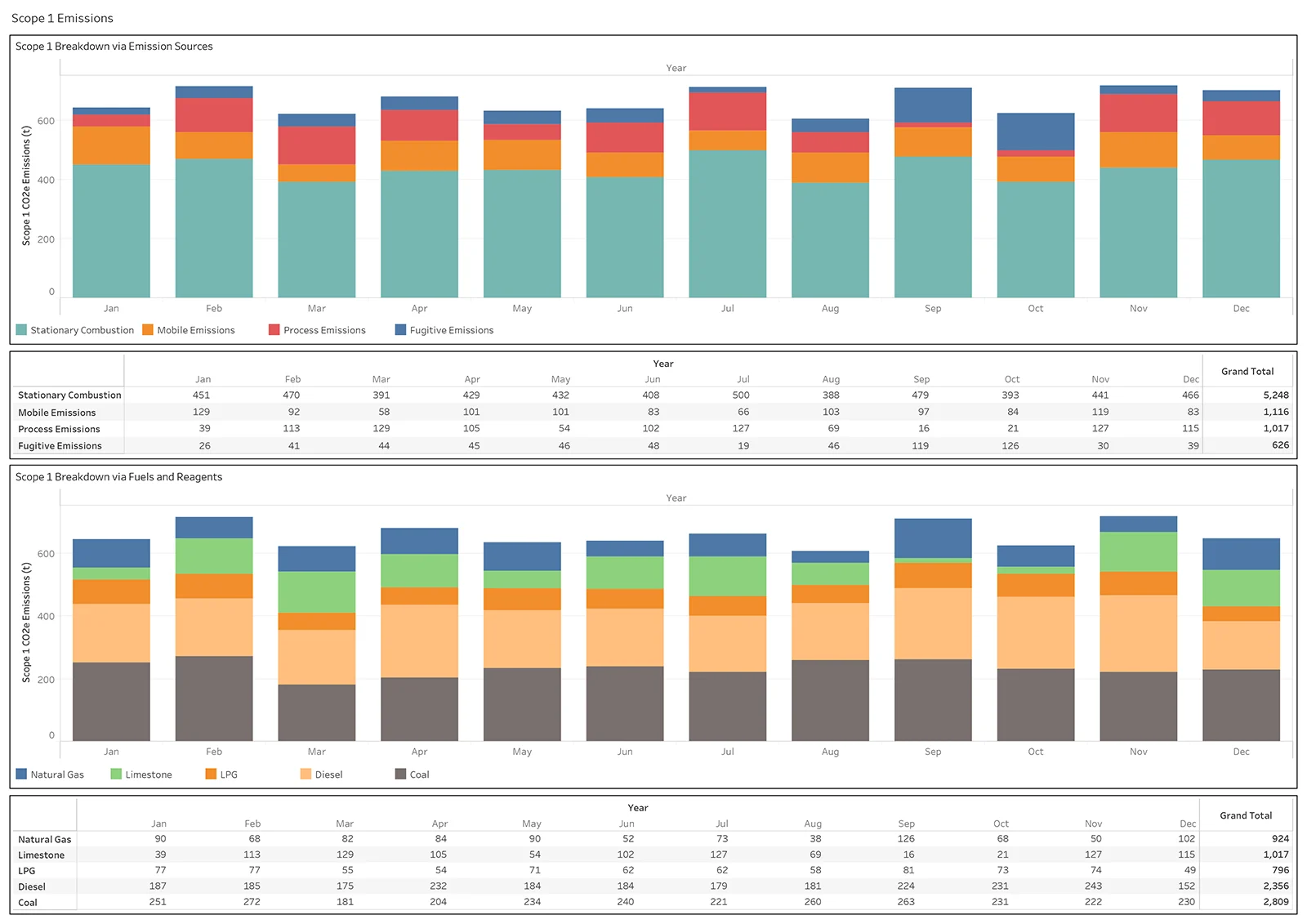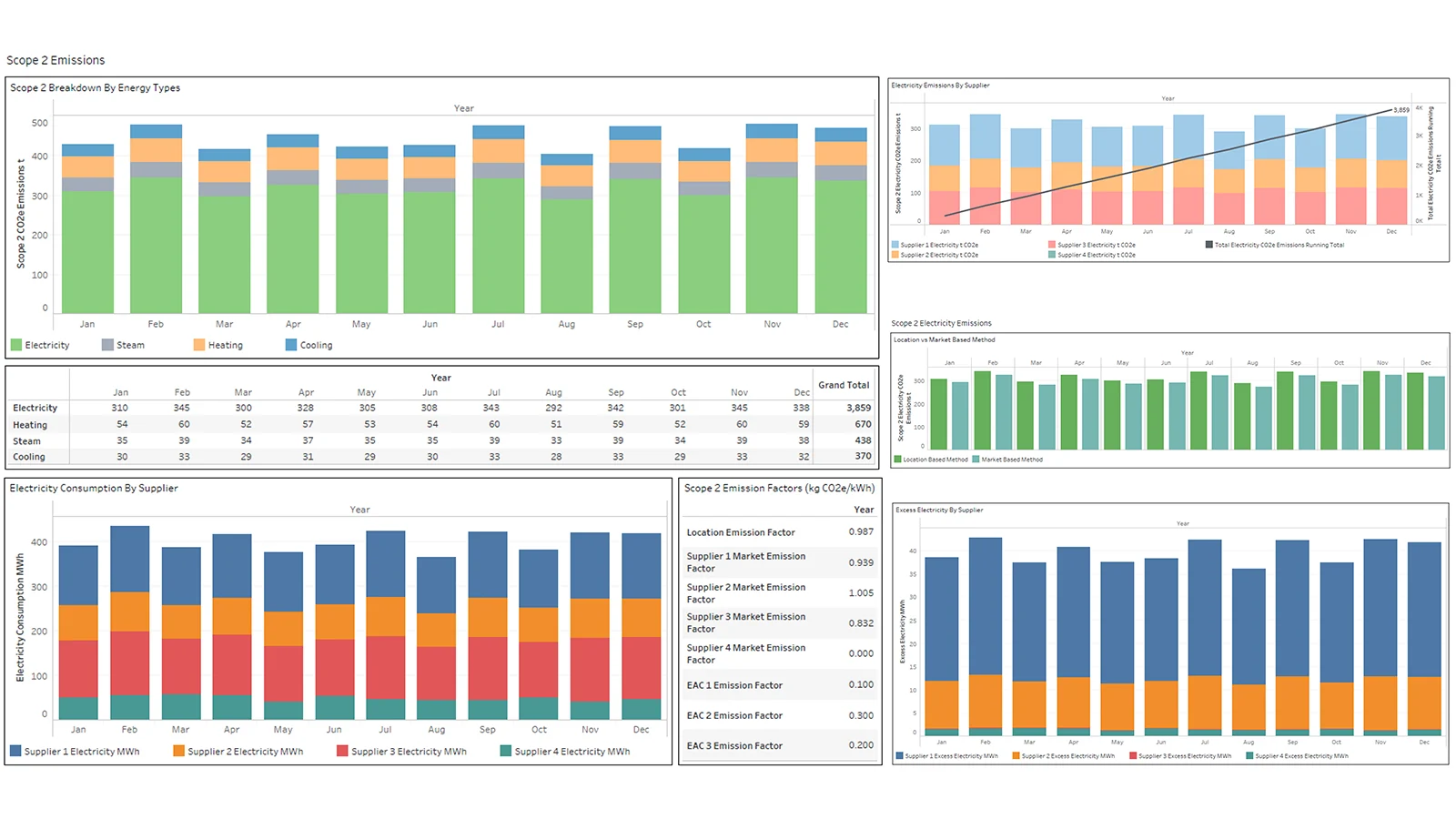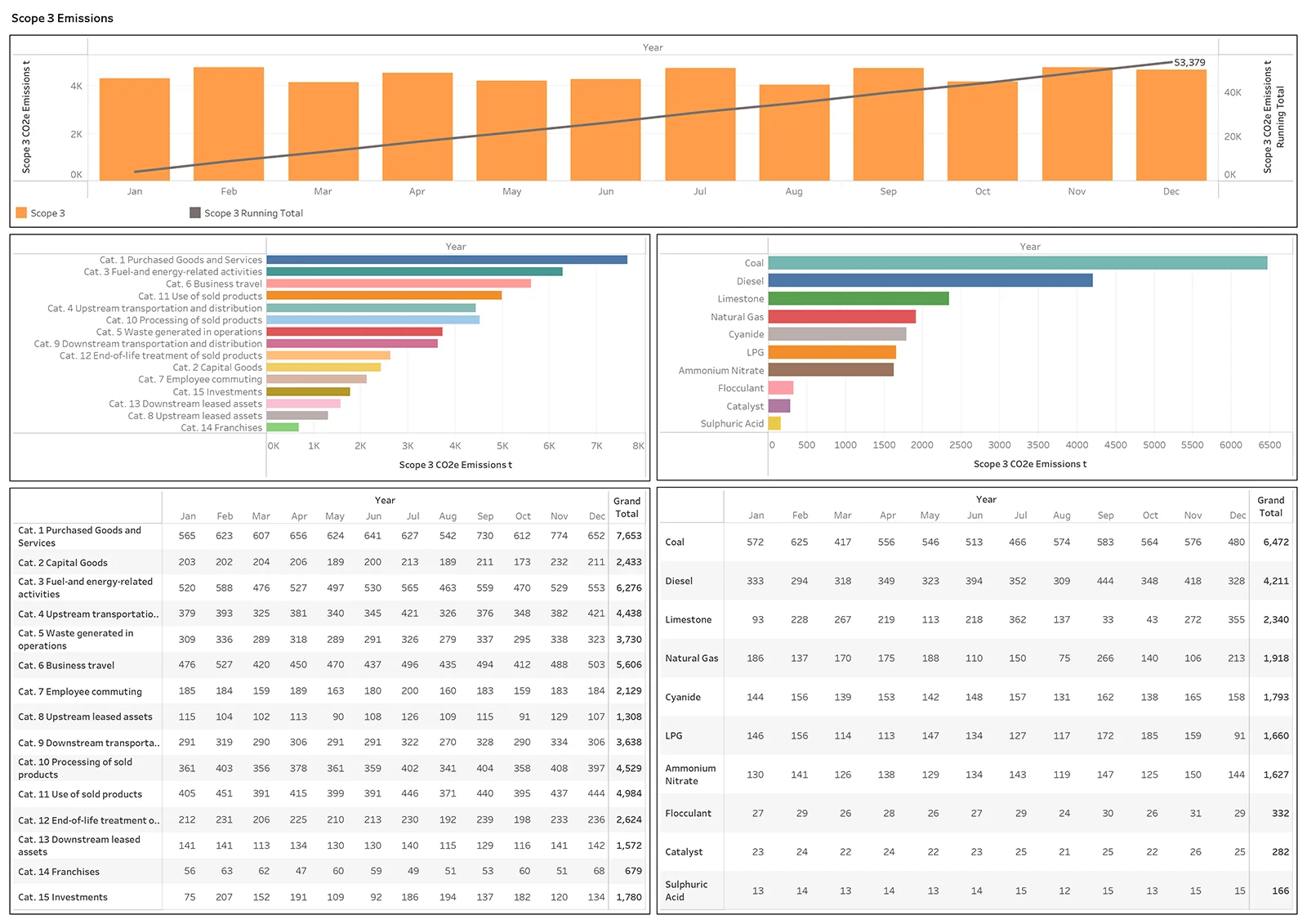Track Scopes 1, 2 & 3
Track and report on Scopes 1, 2 & 3 for the industrial sector
Overview of GHG Protocol scopes and emissions across the value chain

Scope 1: Direct emissions
These are emissions from sources owned or controlled by the company directly, as well as emissions produced from on-site process chemistry.
Scope 1 includes four categories of emissions sources: stationary combustion, mobile emissions, process emissions and fugitive emissions. For example., emissions from the generation of electricity, heat, or steam via combustion within your vehicles, boilers and furnaces turbines.
Emissions will also come from the manufacture, processing or transporting of chemicals, building materials and waste onsite. Fugitive emissions can come from equipment leaks, methane from gas transport, emissions from mine vents and hydrofluorocarbon from refrigeration equipment.
Calculating scope 1 emissions is a complex task to accurately account for various measurement units, currencies, countries, emissions factors and regulations. It is a task beyond the scope of manual spreadsheets. With in-built algorithms and formulas, Sustainability Tracker (ST) can automate and digitise the tracking and calculation of scope 1 emissions across industrial assets to produce reports that are accurate, up-to-date and auditable.
ST can provide visual dashboards tracking all scopes that report on daily, monthly or yearly frequencies. It can report to a baseline and/or target, by geographical location, by site, by scope, by boundary (within the industrial asset), by category, by data type and at the product level.

Scope 2: Electricity indirect emissions
These are emissions from purchased or acquired electricity, steam, heat and cooling consumed by the industrial site. They are indirect as the emissions themselves occur at the point of generation.
Sustainability Tracker (ST) manages complex calculations for these emissions and is designed to support the market-based and location-based methods (also called dual reporting) as required by reporting standards. They are calculated down to a granular product level in a visual dynamic dashboard.
Market based method quantifies emissions by the generators from which organisations purchase electricity.
Location based method quantifies emissions based on average energy generation emission factors for defined geographic locations.

Scope 3: Other indirect emissions
This includes all other indirect emissions that are a consequence of the activities of the company, but occur from sources not owned or controlled by the company.
The Carbon Disclosure Project (CDP) estimates that on average scope 3 emissions make 75% of an organisation’s GHG emissions, with the supply chain being a major contributor. For example, extraction and production of purchased materials, transportation of purchased fuels and use of sold products and services.
Sustainability Tracker (ST) streamlines scope 3 reporting by collecting and integrating data from across your operational systems in an accurate, timely and flexible structure that can change as your processes do.
Unlike spreadsheets and manual error-prone reporting, ST results in traceable and auditable reports to meet strict global compliance requirements. Using comprehensive in-built calculations, you can customise reports from an enterprise-wide view down to defined geographic locations, specific sites, boundary category or product level.
To keep up with the latest emissions factors, the system taps into public lifecycle data tables and sources such as IEA National Electricity Factors, Intergovernmental Panel on Climate Change (IPCC) and US EPA Climate Leaders Program, as well as custom emission factors.

Scope 3 Emissions categories
Upstream
- Purchased goods and services
- Capital goods
- Fuel-and energy-related activities
- Upstream transportation and distribution
- Waste generated in operations
- Business travel
- Employee commuting
- Upstream leased assets
Downstream
- Downstream transportation and distribution
- Processing of sold products
- Use of sold products
- End-of-life treatment of sold products
- Downstream leased assets
- Franchises
- Investments
Take control with proven sustainability reporting software
To learn how Sustainability Tracker can help your organisation with digital transformation for production reporting, materials and energy balance, process optimisation and sustainability reporting, contact our expert team on +61 2 7229 5662 or info@industrialsustainabilitysolutions.com